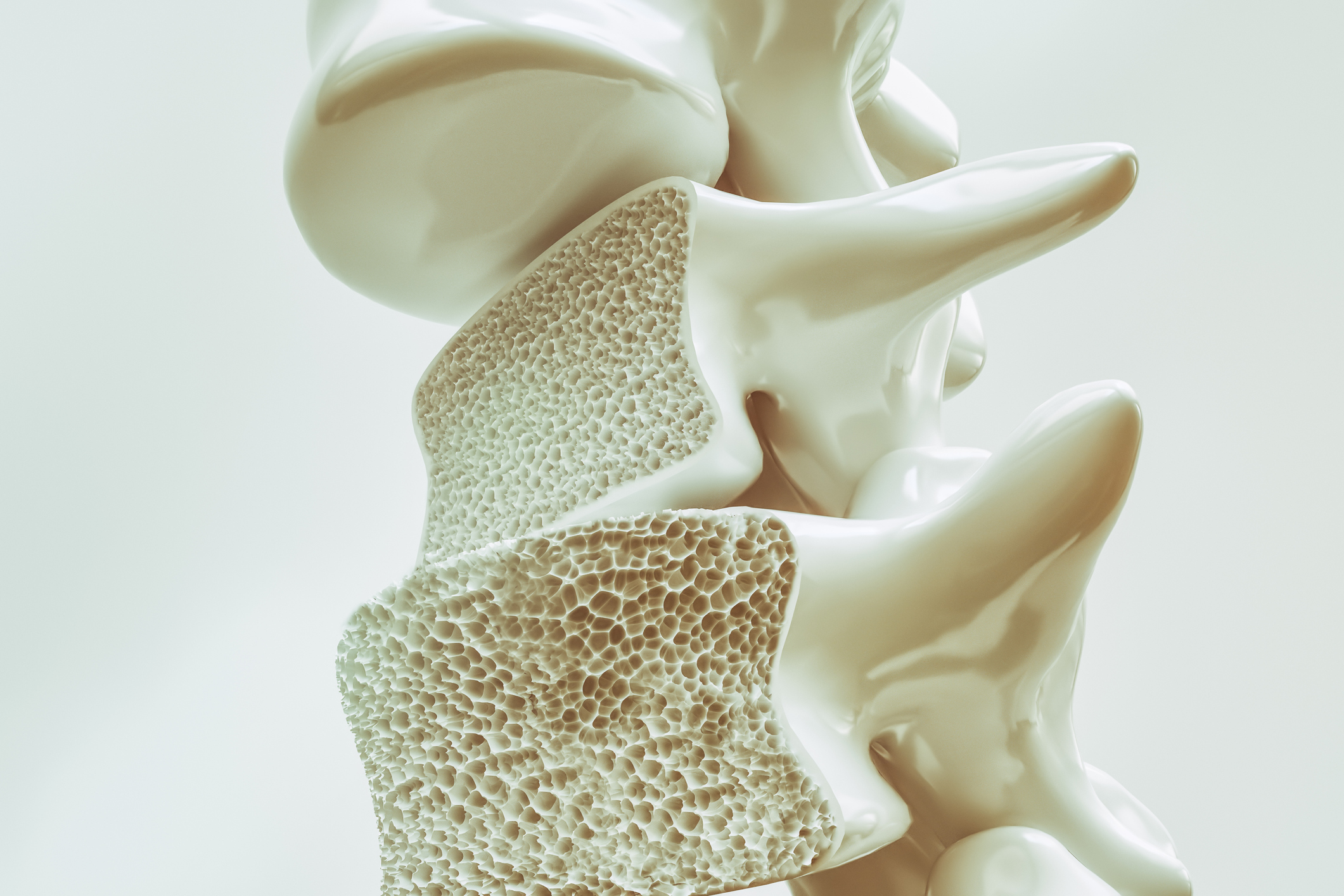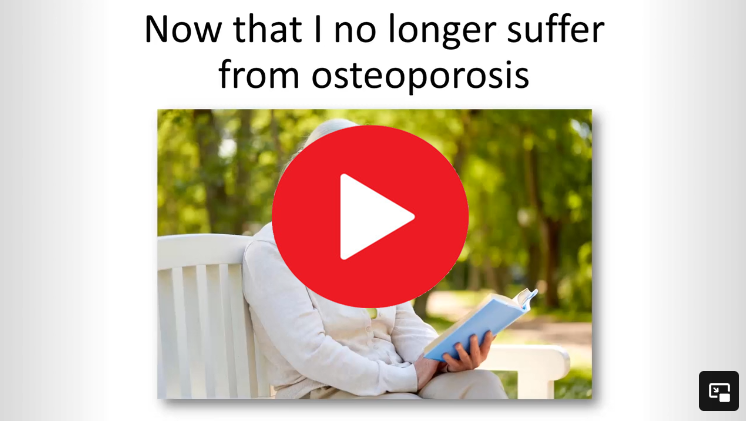
This eBook from Blue Heron Health NewsBack in the spring of 2008, Christian Goodman put together a group of like-minded people – natural researchers who want to help humanity gain optimum health with the help of cures that nature has provided. He gathered people who already know much about natural medicine and setup blueheronhealthnews.com. Today, Blue Heron Health News provides a variety of remedies for different kinds of illnesses. All of their remedies are natural and safe, so they can be used by anyone regardless of their health condition. Countless articles and eBooks are available on their website from Christian himself and other natural health enthusiasts, such as Julissa Clay , Shelly Manning , Jodi Knapp and Scott Davis. |
Understanding Osteopenia and Bone Density: What You Need to Know
Osteopenia is a condition characterized by lower than normal bone density. It is often considered a precursor to osteoporosis, a more severe form of bone loss. Understanding osteopenia and bone density is crucial for maintaining healthy bones and preventing the progression to osteoporosis. This article will explore the definition of osteopenia, its symptoms and diagnosis, the connection between osteopenia and osteoporosis, methods for measuring bone density, lifestyle changes for managing osteopenia, and the psychological impact of this condition.
Defining Osteopenia: A Closer Look
Osteopenia refers to a condition in which bone density is lower than normal, but not low enough to be classified as osteoporosis. It is often considered a warning sign, indicating that bone loss is occurring at a faster rate than bone growth. While osteopenia may not cause noticeable symptoms, it can increase the risk of fractures and make bones more vulnerable to injury.
Understanding the progression of osteopenia is crucial in preventing the development of more severe bone conditions. Individuals with osteopenia may benefit from lifestyle changes such as weight-bearing exercises, adequate calcium intake, and vitamin D supplementation to help maintain bone strength and reduce the risk of fractures.
The Role of Bone Density in Osteopenia
Bone density plays a crucial role in osteopenia as it reflects the amount of mineral content in bones. A higher bone density indicates stronger bones and a lower risk of fractures. In osteopenia, the bone density is reduced, making bones weaker and more prone to fractures.
It is important to note that factors such as age, gender, genetics, and lifestyle choices can all influence an individual’s bone density and susceptibility to osteopenia. By addressing these factors through proper nutrition, exercise, and medical management, individuals can take proactive steps to maintain bone health and reduce the impact of osteopenia.
Symptoms and Diagnosis of Osteopenia
Unlike osteoporosis, osteopenia does not typically cause noticeable symptoms. In fact, many people are unaware that they have osteopenia until a bone density test reveals the condition. Regular bone density screenings, especially for individuals at higher risk, are essential for early detection and intervention.
It is recommended that individuals with risk factors such as a family history of osteoporosis, low body weight, smoking, or certain medical conditions undergo regular screenings to monitor their bone health. Early diagnosis of osteopenia can lead to timely interventions that help prevent further bone loss and reduce the risk of fractures in the future.
The Connection Between Osteopenia and Osteoporosis
Osteopenia and osteoporosis are closely related conditions. Osteopenia can be considered a precursor to osteoporosis, as individuals with osteopenia have a higher risk of developing osteoporosis later in life. Both conditions involve a loss of bone density, but osteoporosis is characterized by severe bone loss, leading to a significantly higher risk of fractures.
It’s important to note that osteopenia and osteoporosis primarily affect older adults, particularly postmenopausal women. As individuals age, their bone density naturally decreases, making them more susceptible to these conditions. Women are at a higher risk due to the rapid decline in estrogen levels during menopause, which plays a crucial role in maintaining bone health. Men can also develop osteopenia and osteoporosis, especially as they age and experience hormonal changes.
Risk Factors for Developing Osteopenia and Osteoporosis
Several risk factors contribute to the development of osteopenia and osteoporosis. These include age, gender, family history, hormonal imbalance, low calcium intake, sedentary lifestyle, smoking, excessive alcohol consumption, and certain medical conditions such as rheumatoid arthritis and celiac disease. Understanding these risk factors can help individuals take proactive steps to protect their bone health.
In addition to the mentioned risk factors, certain medications can also increase the likelihood of developing osteopenia and osteoporosis. Long-term use of corticosteroids, commonly prescribed for conditions like asthma and rheumatoid arthritis, can weaken bones over time. It’s essential for individuals taking these medications to discuss potential bone health implications with their healthcare providers and explore preventive measures.
Preventing the Progression from Osteopenia to Osteoporosis
Although osteopenia is a warning sign, it is not inevitable that it will progress to osteoporosis. Taking steps to prevent further bone loss is crucial. This includes ensuring an adequate intake of calcium and vitamin D, engaging in weight-bearing exercises, quitting smoking, moderating alcohol consumption, and consulting with healthcare professionals to explore potential treatment options.
Furthermore, maintaining a healthy lifestyle that includes a balanced diet rich in calcium, magnesium, and other essential nutrients is key to supporting bone health. Regular physical activity, especially weight-bearing and resistance exercises, can help strengthen bones and reduce the risk of fractures. By incorporating these habits into daily life, individuals can significantly improve their bone density and overall well-being.
Understanding Bone Density
Measuring bone density is vital in determining the health of one’s bones and assessing the risk of fractures. Several methods are used to measure bone density, including dual-energy X-ray absorptiometry (DXA) scan, quantitative ultrasound, and quantitative computed tomography. These tests provide information about the strength and density of bones, helping healthcare professionals make informed decisions about treatment and prevention strategies.
Having optimal bone density is crucial for overall health and well-being. Strong bones are essential for supporting the body, protecting vital organs, and allowing for movement. Bones also act as a reservoir for essential minerals such as calcium and phosphorus, playing a key role in maintaining mineral balance in the body.
How Bone Density is Measured
The most common method to measure bone density is the DXA scan. This non-invasive test involves taking X-ray images of specific bones, such as the hip and spine, and comparing them to the bone density of a healthy young adult. The results are reported as a T-score, which compares an individual’s bone density to that of the reference population. A T-score between -1 and -2.5 indicates osteopenia.
Quantitative ultrasound is another method used to measure bone density, particularly in peripheral bones like the heel. This technique measures the speed of sound waves passing through the bone, providing information about bone quality. Quantitative computed tomography, on the other hand, uses a series of X-ray images to create a 3D model of the bone, allowing for a detailed assessment of bone density and structure.
Factors Affecting Bone Density
Several factors can influence an individual’s bone density. These include genetic factors, hormonal changes, age, gender, nutrition, physical activity levels, and certain medications. Understanding these factors can help individuals make informed decisions about lifestyle changes and treatments to maintain or improve bone density.
Genetics play a significant role in determining bone density, with studies showing that individuals with a family history of osteoporosis are at a higher risk. Hormonal changes, such as decreased estrogen levels in postmenopausal women, can also lead to a decline in bone density. Adequate nutrition, especially calcium and vitamin D intake, is essential for building and maintaining strong bones. Regular weight-bearing exercises, such as walking or weightlifting, can help increase bone density by stimulating bone formation.
Lifestyle Changes for Managing Osteopenia
Making lifestyle changes is crucial for managing osteopenia and preventing the progression to osteoporosis. Two significant aspects of managing osteopenia are maintaining a healthy diet and engaging in regular exercise.
Importance of Diet and Exercise
A well-balanced diet rich in calcium, vitamin D, and other essential nutrients is essential for maintaining bone health. Calcium-rich foods include dairy products, dark leafy greens, fortified foods, and certain fish. Additionally, regular weight-bearing exercise, such as walking, dancing, or strength training, helps to strengthen bones and improve bone density. It is important to consult with a healthcare professional or a dietitian for personalized dietary and exercise recommendations.
Medications and Treatments for Osteopenia
In some cases, healthcare professionals may prescribe medications to slow down bone loss and improve bone density. These medications include bisphosphonates, selective estrogen receptor modulators, hormone therapy, and anabolic agents. The specific medication and treatment plan will depend on the individual’s risk factors and medical history, and it is essential to discuss the potential benefits and risks with a healthcare professional.
The Psychological Impact of Osteopenia
Receiving a diagnosis of osteopenia can have psychological implications for individuals. Coping with the diagnosis and maintaining a positive outlook are crucial for managing this condition.
Coping with the Diagnosis
It is normal to feel a range of emotions upon receiving an osteopenia diagnosis. Individuals may experience fear, anxiety, or frustration about their bone health and the potential for future fractures. Seeking support from loved ones, joining support groups, and engaging in stress management techniques can help individuals cope with the emotional impact of this condition.
Maintaining Quality of Life with Osteopenia
Osteopenia should not define an individual’s life. By adopting a proactive approach to bone health and following the recommended lifestyle changes, individuals with osteopenia can maintain a good quality of life. It is important to focus on engaging in activities that bring joy and practicing self-care to promote overall well-being.
In conclusion, understanding osteopenia and bone density is crucial for maintaining healthy bones and preventing the progression to osteoporosis. By educating oneself about the definition, symptoms, and diagnosis of osteopenia, as well as the connection between osteopenia and osteoporosis, individuals can take proactive steps to protect their bone health. Measuring bone density, making lifestyle changes, and addressing the psychological impact of the diagnosis are crucial components of managing osteopenia and maintaining a good quality of life. By empowering oneself with knowledge and seeking appropriate medical advice, individuals can take control of their bone health and live a fulfilling life.
The Bone Density Solution by Shelly ManningThe program is all about healthy food and healthy habits. As we discussed earlier, we develop osteoporosis due to low bone density. Therefore, you will have to choose the right food to help your calcium and other vitamin deficiencies. In addition to healthy food, you will have to regularly practice some mild exercises. Your doctor might offer you the same suggestion. However, the difference is that The Bone Density Solution will help you with an in-depth guide.
